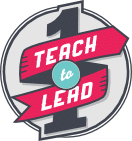Teamwork is essential in daily life. It’s one of those principles that at-risk kids will use the most in their adult lives, like studying with friends for a big college exam, learning compromise with a spouse to ensure a successful marriage, and working with co-workers to meet a deadline. Working with a team is a skill that every at-risk kid needs to perfect.
Now that the 2014 World Cup soccer tournament is over, it’s a great time to look at teamwork as it relates to soccer and compare that to mentoring. At Teach One to Lead One, we encourage our at-risk kids to contribute to teamwork and reap the many benefits.
Soccer is one of the most competitive sports out there, and a win is almost never possible without a strong team working together to kick the ball into the goal. Teamwork is one of the many reasons that Germany won the World Cup—they had a stronger team than Argentina.
It’s often hard to convince at-risk kids that working with others—mentors, classmates, friends, parents, family, enemies, teachers—is a smart idea. At-risk kids have built a lot of walls to get to the troubled state they’re in when they begin the T1L1 program. They don’t trust others and like to be independent. It takes a lot of coaching and encouragement to warm up to positive change by letting someone—or a lot of people—help.
Soccer and Mentoring?
Comparing mentoring to a team sport like soccer is easy. Below are a few ways that mentors can teach at-risk kids the value of teamwork.
-
Choosing the right team. At-risk kids have trouble choosing the right people for their lives. At T1L1, we teach them to choose teammates with a good track record of positive decisions.
-
Identifying strengths and passing the ball. Once an at-risk kid has chosen a good team, it’s important to identify the strengths of all team members. Encourage at-risk kids to write down their strengths and weaknesses as it relates to the tasks of the goal. They can pass the ball to someone who is good at something they’re not comfortable with quite yet.
-
What’s the goal? In soccer, the goal is obvious, but ask the team to identify the goal of the project they are working on together is key to seeing the whole picture.
-
Running together. Working together means that a teammate should never be left behind. Soccer players run together to block the other team from scoring a goal. It’s important to run as a team so the task at hand is never out of sight and the end goal is achieved together.
-
Communication. Communication is an important part of working with a team. Encourage at-risk kids to identify and speak up about challenges and risks that could impact the end result.
-
Struggle. Struggling is never fun; doing it alone is a lot worse. Luckily with a team, there are a lot of shoulders to lean on and ears for listening.
-
Praise and support. One of the best things about working as a team is hearing “great job.” Teach at-risk kids that giving praise is almost better than receiving it.
-
Scoring a goal. Scoring goals get you closer to a win and although winning is awesome, overcoming the challenges that lead to the win is just as good. When you win with a team, you can celebrate.
As a mentor, share some ways that you encourage your at-risk kids to work as a team? We’d love to know!




